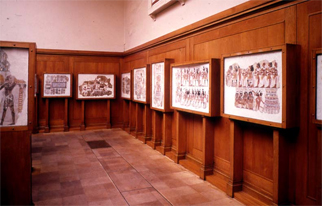8.4 Conclusion
So then, perhaps we can say that out of a complex constellation of factors ranging all the way from what they could physically carry, through a set of deeply embedded ideas about art, to a vivid set of contemporary cultural interests, Salt and d’Athanasi between them effected a kind of translation.
They took the representational codes of ancient Egypt and rendered them into a comprehensible contemporary language of art – where ‘art’ as such was still a central medium of cultural reflection: that is, where key themes in a culture got worked through – tested, challenged, and enjoyed.
When their Victorian descendants put the fragments into frames and hung them on the wall in the manner of easel paintings, it was a silent tribute to their success (Figure 34). What is happening now, in the early twenty-first century, is that new display amounts to a restoration, as it were a ‘retranslation’ of the fragments back into the representational language in which they originally produced their meanings, three thousand years ago.

